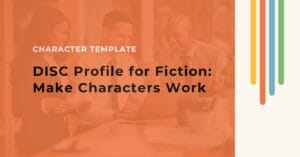
Organize your creativity with the #1 book outlining and story bible software for professional and aspiring writers.
Product
Helpful Links
© Fictional Devices, 2024. All Rights Reserved.
People contain multitudes. They are messy, complicated, and often unpredictable. When creating characters, you need to show why they act the way they do (and find their inner contradictions).
Enter Myers-Briggs for fiction. It’s a psychology-based tool that will help you define characters’ personalities, so that you can create believable character arcs. Keep reading to learn how you can use Plottr’s Myers-Briggs Character Template and create richly varied personalities.
The Myers-Briggs Type Indicator, or MBTI, is a system for determining personality type. The model is inspired by Carl Jung’s writings about archetypes, the universal images and themes that recur across diverse cultures.
Myers-Briggs divides personality types into four pairs of dimensions, similar in this aspect to the four temperaments in ancient Greek philosophy. These are:
Where individuals lie on the spectrum between each of these pairs determines which of 16 personality types they fit (we go into this in more detail below).
This framework gives a way to identify personality traits such as inwardness vs being outgoing, logical thinking vs gut action, and the unique balance between them in each person. Keep reading to learn how this helps character creation.
The purpose of the original MBTI structure is to help you discover deeper insights into yourself. This self-awareness helps you learn to navigate the world and confront challenges according to your strengths.
For writers, Myers-Briggs is valuable for fleshing out more lifelike characters. Knowing how and why a character will act and react will help you keep them consistent. That way, even when characters behave against type, the motivations behind those behaviors will stay believable.
Using Myers-Briggs for fiction, you can:
You can take an official online test, called the Instrument, to get your customized MBTI results. But there is a substantial fee to get the complete report, so for building characters, it may be better to browse summaries of each MBTI personality trait and use these to deduce your character’s type.
When you open the Myers-Briggs Type Indicator template in Plottr, you’ll see two fields:
There are sixteen personality types altogether, which are built from the two options available for each of four traits:
Each of the sixteen personality types may be expressed as the following archetypes.
Read up on MBTI types and explore concepts like each type’s potential dark side, their love languages, and their most suitable career paths. Researching Myers-Briggs for fictional use will surely lead you down fascinating, useful rabbit holes.
Want to use Myers-Briggs for outlining stories? We’ll use Steve Rogers, a.k.a. Captain America. Fans generally agree he’s an INFJ, also known as the Defender.
Let’s explore filling out the Myers-Briggs template in Plottr for Steve Rogers, with that personality type, the archetype, plus a few relevant traits.
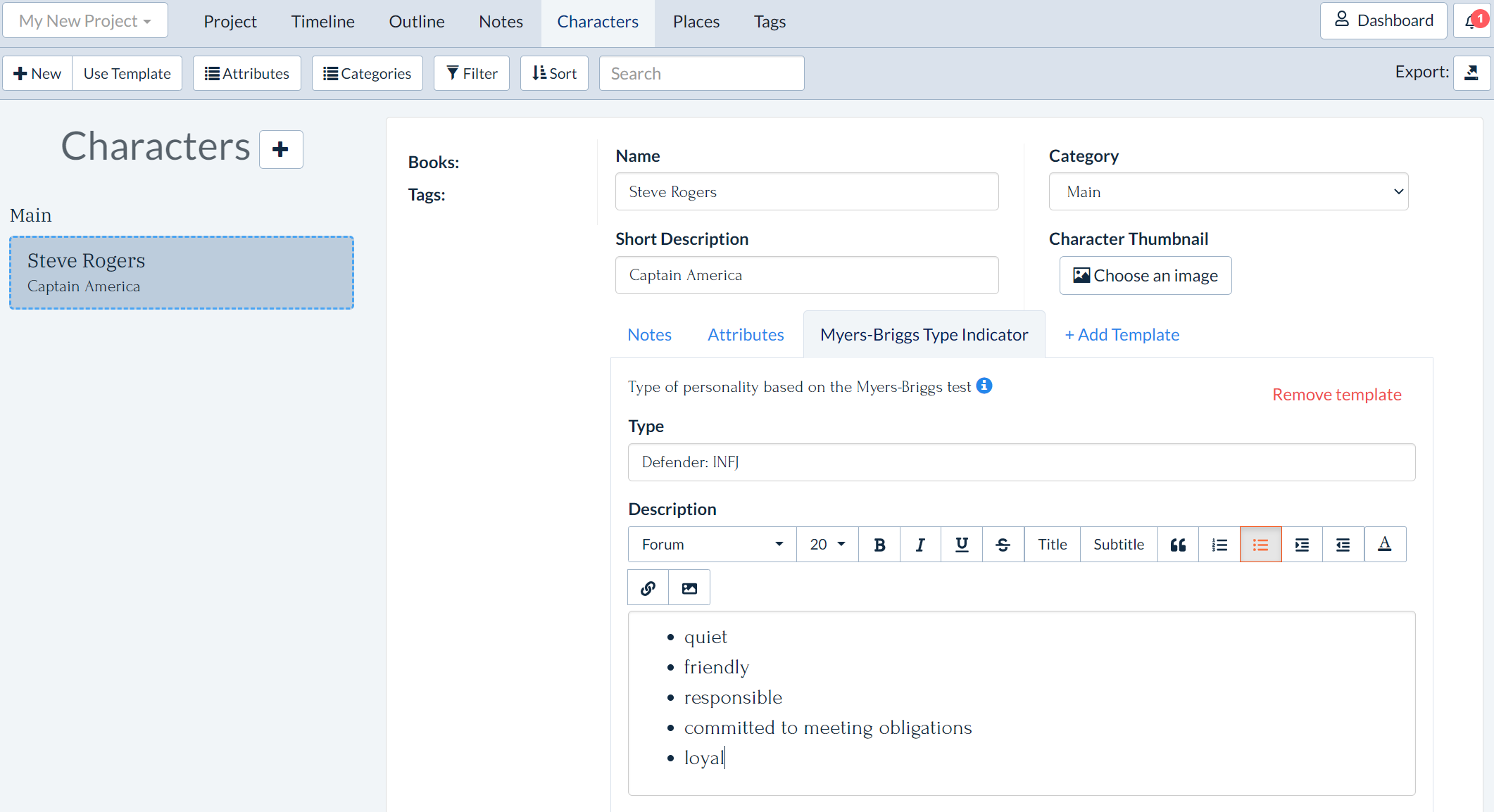
In the template pictured above, we’ve filled in typical INFJ qualities. You could then fill out the template with more information as the story develops.
You could ask, “In what way is Steve quiet? Friendly? Responsible? Committed to obligations? Loyal?” What are possible plot points that could illustrate these qualities?
It may help to know what other personality types have chemistry with your character, too. INFJ types may have great chemistry with the Protagonist type, ENFJ.
If you’re ready to use Myers-Briggs for fiction and character building, it’s easy to get started! To begin, make sure you purchase Plottr or sign up for a free trial.
Once you have Plottr set up on your computer, follow these simple steps to start using lessons from Myers-Briggs for fiction:
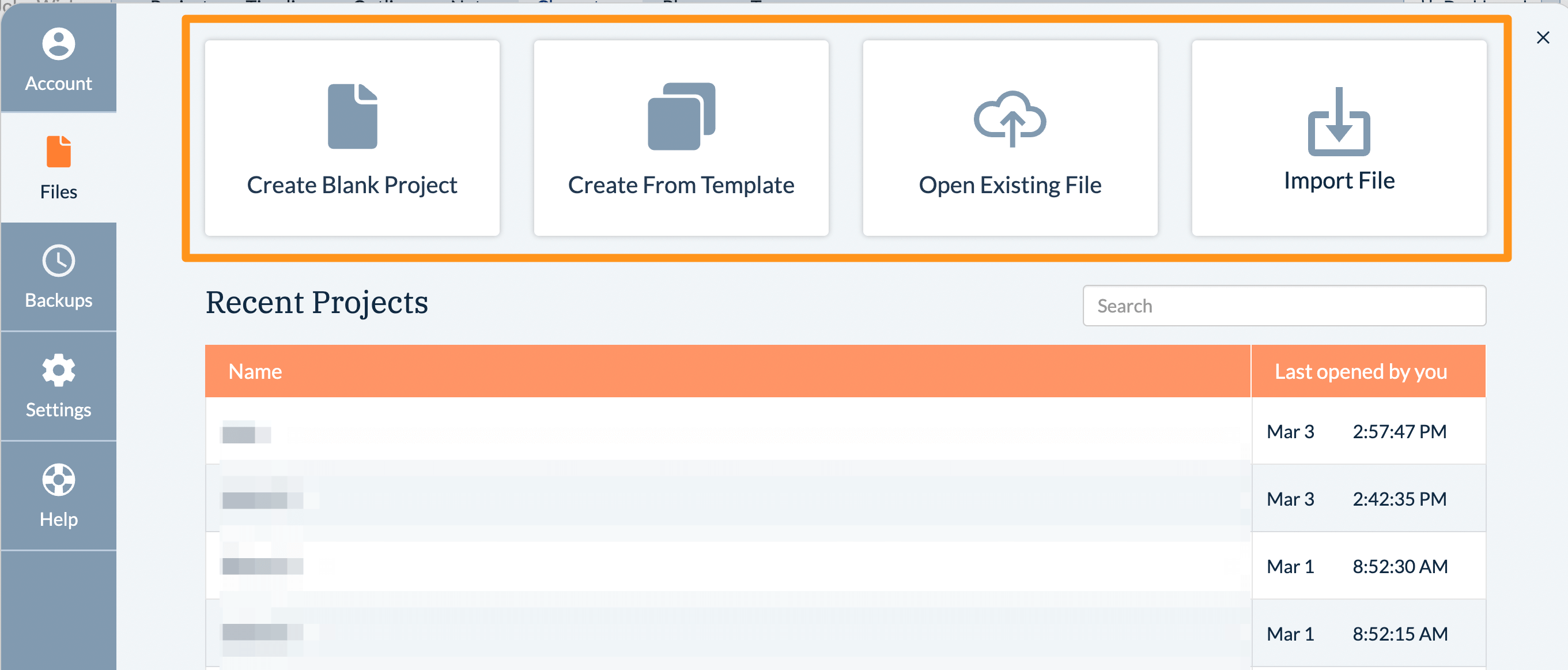
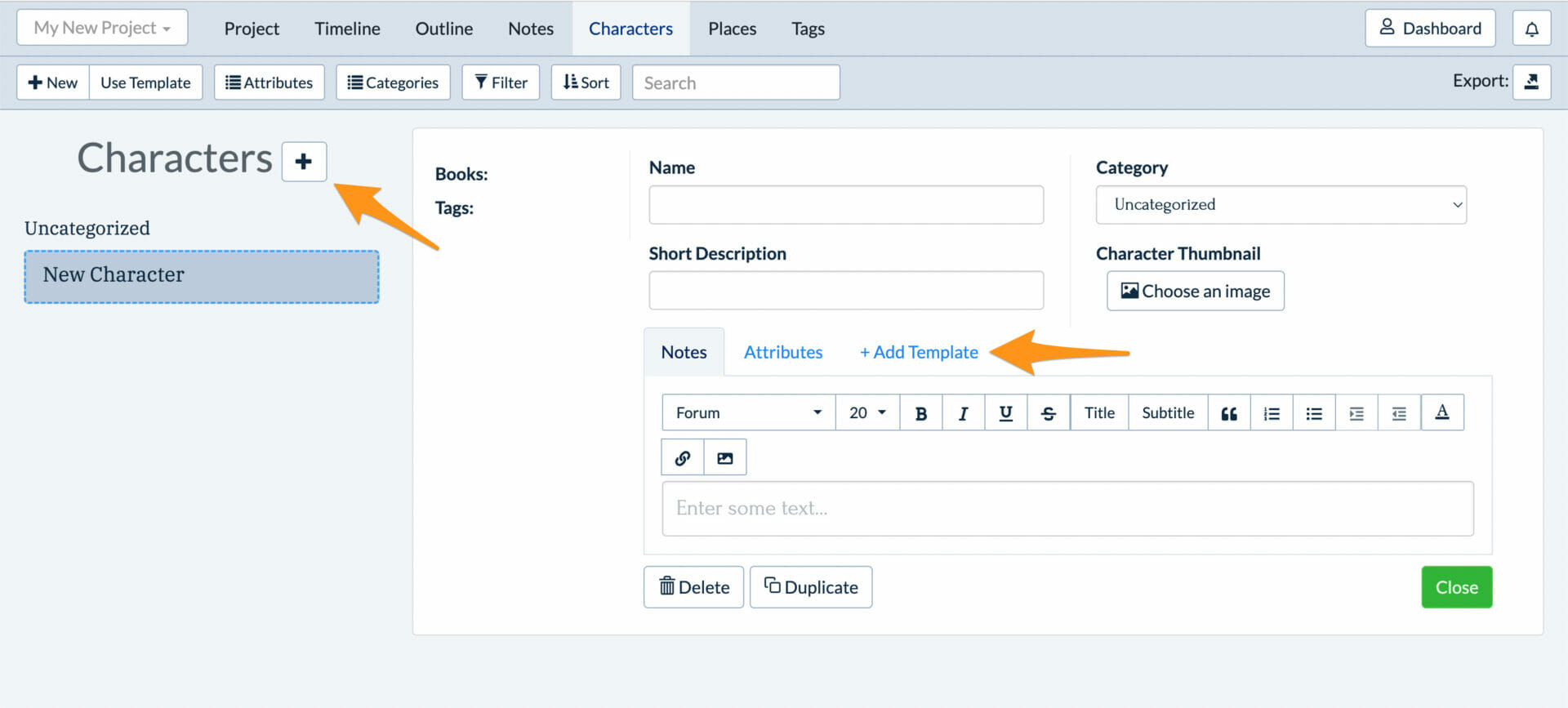

The template is now ready to use and will supplement all the other details you add to your character profiles. And speaking of other details, these templates work well in combination with Myers-Briggs:
Using Myers-Briggs for fiction will help you learn a lot about your cast. Have you applied this template to any of your projects yet?
Get free Plottr training and join our Tuesday tutorials. Let us know how you’ve been using Plottr’s templates!
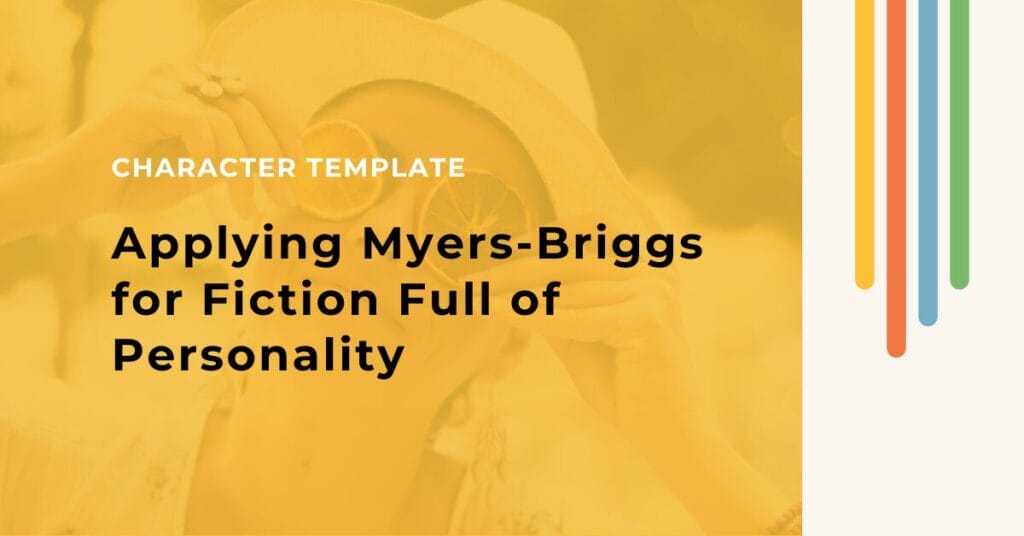

© Fictional Devices, 2024. All Rights Reserved.
Comments